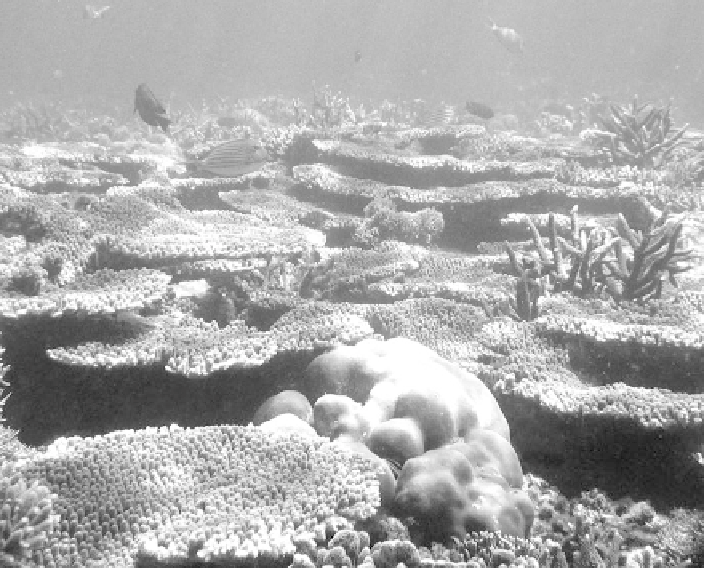Environmental Engineering Reference
In-Depth Information
Fig. 17.1 Intact coral reef, Sulawesi/Indonesia (Photo by E. Borell)
producers, herbivores consist of sea urchins and herbivorous fish and predators
are composed of invertivorous and certain piscivorous fish as well as humans,
i.e. fishermen.
Model relationships and parametrisation were all based on empirical studies and
local fisheries data. To keep the model at an operational size, McClanahan
considered only a limited number of the system's key components and their
interactions and left out other food web pathways such as phytoplankton, detritus
or corallivores and top predators, such as sharks. Gross and net reef production is
calculated by combining production and respiration for both algae and corals.
Although the model considers that both groups fix calcium carbonate from the
seawater, corals in the model calcified at rates ten times greater than algae and thus
represented the major calcium carbonate depositors. Sea urchins and herbivorous
fish competed for algae and in the process of foraging eroded reef structure with the
erosion by urchins being tenfold higher than that of fish.
Invertivores controlled the abundanceofurchinsandinthemodelswitched
to an unspecified alternative food source upon depletion of sea urchins. This had
the effect that invertivores did not experience bottom-up control, which
decreased fluctuations in model dynamics. Herbivorous fish were controlled
by piscivores. At the very top end of this web were humans who ultimately

